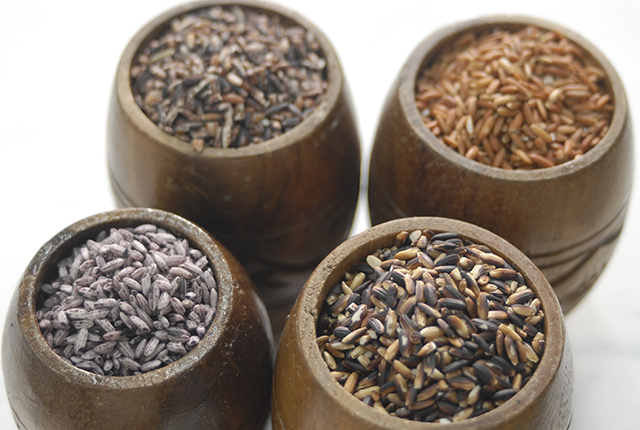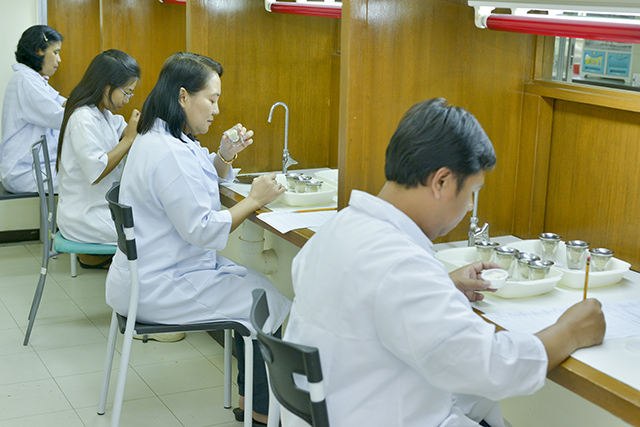 Filipinos’ love for rice is unlimited.
Filipinos’ love for rice is unlimited.
Despite the need to include other high value crops in our health, Filipino families prioritize rice in the food expenses. For families living below the poverty line, having rice on the table is enough as they cannot afford a diverse diet to meet their nutritional needs due to rising food prices.
“Rice intake was lowest among the richest households and highest among poor households,” the 8th National Nutrition Survey conducted by the Food and Nutrition Research Institute (FNRI) observed. A report published by the Food and Agriculture Organization noted an increase of undernourished people in the world from 777 million in 2015 to 815 million in 2016. The UNICEF Conceptual Framework of Malnutrition identified inadequate dietary intake as one of the immediate causes of maternal and child undernutrition. In the Philippines, among the most vulnerable to malnutrition are children aged 0-5 years old.
During a seminar on nutrition held at the Philippine Rice Research Institute (PhilRice) organized by the Rice Chemistry and Food Science Division (RCFSD), Dr. Leila S. Africa, director of the Institute of Human Nutrition and Food at the University of the Philippine Los Baños explained that the number of underweight and stunted children below 5 years old has increased.
“Underweight prevalence increased from 20% in 2013 to 21.5% in 2015. Stunting prevalence also increased from 30.3% in 2013 to 33.4%,” Africa said, citing FNRI in her presentation.
For Africa, agriculture is one of the sectors that can take practical steps to develop nutrition-sensitive programs. She also said that including pregnant and lactating women in rice research and development interventions is important as they are the main source of nutrients to infants.
Food scientists at PhilRice are developing and promoting healthier forms of rice and rice-based products with high nutritional value to help solve malnutrition in the country.
“Rice, must not only be accessible, available, and affordable. It should also be safe and nutritious at all times,” said Rosaly Manaois, head of RCFSD.
Brown or unpolished and pigmented are healthier forms of rice. The frequent consumption of brown rice may help fight cardiovascular disease, cancer, and diabetes.
According to Dr. Marissa V. Romero, chief science research specialist at RCFSD, white rice is essentially starch converted to sugars. Polishing brown rice to obtain white rice removes essential nutrients such as fiber, protein, vitamins, minerals, and antioxidants.
Even healthier than brown rice is germinated brown rice due to its enhanced nutritional and eating quality. Aside from higher amounts of dietary fiber, vitamin E, niacin, lysine, thiamine, pyridoxine, and magnesium, it also contains significant amount of gamma-aminobutyric acid or GABA.
GABA is a major neurotransmitter that can improve mental ability, help treat climacteric disorder and autonomic imbalance, and can lower blood pressure.
Romero and her team also found that pigmented rices, or the red and black rices that are mostly traditional varieties, are healthier than white rice due to their antioxidant content. These pigmented rice is rich in antioxidants such as phenolic compounds, vitamin E derivatives, and y-oryzanol that are effective free radical scavengers.
To maximize the health benefits of pigmented rice, Romero recommended that it should be consumed in its unpolished form as phytochemicals are significantly lost during polishing.
Rice-based products
Romero and her team also utilized germinated brown rice or GABA rice in developing instant, ready-to-eat product and ready-to-drink beverage.
“We developed instant GABA rice congee as a healthier meal or snack item. It is also suitable as calamity food. When natural disasters strike, it is important that we are able to provide our children a healthier option other than the commonly served instant noodles with high sodium content,” Romero said.
Another product called Nutri Rice Milk combines germinated brown rice and buffalo’s milk. GABA improves brain functions while buffalo’s milk is a good source of protein and calcium.
To deliver additional micronutrients such as iron, beta-carotene, and folate, moringa-enriched rice cracker and salt bread with chili leaves were developed by Dr. Riza Abilgos-Ramos and her colleagues Ms. Manaois and Amelia V. Morales.
A board member of Philippine Society of Nutritionist-Dietitians, Abilgos-Ramos said “folate is needed for normal growth and the B vitamin is needed to prevent underdevelopment of spine in the first three months of the baby.” Among vegetables, malunggay has the highest amount of calcium and phosphorous. It is also rich in vitamin C, iron, and potassium which is why they used it as an ingredient for rice cracker.
The products were developed to address undernourishment and micronutrient deficiency among children, pregnant, and lactating women.
PhilRice researchers hope that investment on rice nutrition research will increase so that they can develop more nutritious products that could help alleviate the state of malnutrition in the country.





